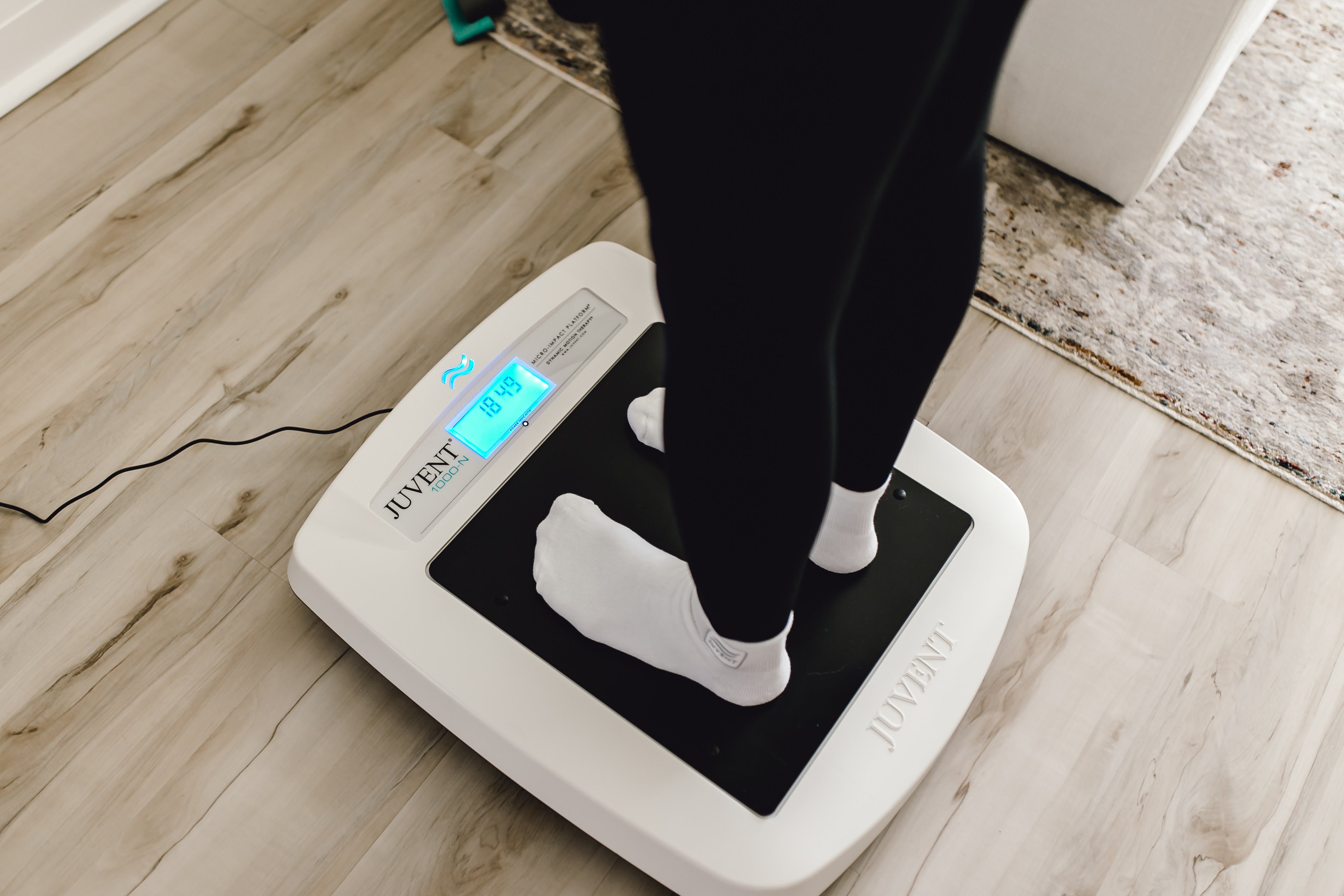Edema is swelling caused by excess fluid trapped in the body's tissues. It can affect anyone but is more common in certain populations due to risk factors and health conditions. Understanding why edema happens and who it is most likely to affect is crucial for prevention and management. We’ll help you understand more about edema, edema risk factors, and highlight how Juvent's Micro-Impact Platform can be an effective part of the treatment and management plan.
What Causes Edema?
Edema occurs when the tiny blood vessels in the body leak fluid into the surrounding tissues, leading to swelling. Several conditions or situations can lead to edema in different parts of the body:
- Heart Conditions: Conditions like congestive heart failure can cause the heart to pump blood less effectively, leading to fluid buildup in the legs, ankles, and feet.
- Kidney Disease: Impaired kidney function can result in the body's inability to get rid of excess fluid and sodium, causing swelling.
- Liver Disease: Liver conditions such as cirrhosis can cause fluid retention in the abdomen and legs.
- Venous Insufficiency: Poor blood flow in the veins, which carry blood back toward the lungs and heart, can cause fluid buildup in the lower extremities. This is most often seen with varicose veins.
- Injury or Surgery: Trauma or surgical procedures can lead to edema around the affected area.
- Medications: Certain medications, including those for high blood pressure, diabetes, and hormonal therapy, can increase the risk of edema.
Are There Different Types of Edema?
Edema can manifest in different forms, depending on the underlying cause and location of fluid buildup.
- Local and Peripheral Edema: Swelling in the legs, ankles, and feet, often caused by heart conditions, kidney problems, or injury to the area.
- Lymphedema: Swelling caused by a blockage in the lymphatic system, often affecting the arms or legs.
- Pulmonary Edema: Fluid accumulation in the lungs, which can be life-threatening and requires immediate medical attention. Pulmonary edema treatment is serious and should be handled by a medical professional.
- Cerebral Edema: Swelling in the brain, usually due to injury, infection, or stroke.
Who Is Most Likely to Get Edema?
Edema is more common in those who have a higher number of risk factors, including age. Older adults are more likely to experience edema due to age-related changes in blood vessels and kidney function. Conditions such as heart disease, kidney disease, and diabetes increase the likelihood of fluid retention. While more temporary, hormonal changes and increased blood volume during pregnancy can lead to edema, especially in the legs and feet. Those who do not regularly participate in physical activities can experience a higher degree of poor circulation and fluid buildup. Excess body weight can also put additional pressure on veins and lymphatic vessels, leading to edema.
Treatment for Edema
Effective management of edema involves addressing the underlying cause and implementing lifestyle changes to reduce fluid retention. Treatment options range and are very dependent on the cause of the edema. It’s important to work with your medical provider for the right approach, but options include:
- Medications: Diuretics may be prescribed to help the body eliminate excess fluid.
- Compression Garments: Wearing compression socks or sleeves can help reduce swelling by improving circulation. Depending on the condition, custom garments may be needed.
- Elevation of the Affected Area: For injuries or edema in the limbs, raising the swollen appendage above heart level can help drain excess fluid.
- Dietary Changes: Reducing sodium intake may help decrease fluid retention.
- Peripheral Devices for Circulation: Innovative technology like Juvent’s Micro-Impact Platform can offer a non-invasive and safe approach for those managing edema. The gentle vibrations key into the frequency of the user’s body. Since it is not stressful on the body and is well tolerated in those who are deconditioned, it can be particularly helpful for those who have a sedentary lifestyle or chronic conditions. The platform’s low-magnitude, high-frequency vibrations promote circulation and promote lymphatic drainage, helping to reduce fluid retention and swelling. Unlike some treatments, the Micro-Impact Platform offers a potential way to manage edema that could reduce the need for medications and complicated compression garments. With the added benefits of promoting balance and stability, just a few minutes a day on the platform yields numerous benefits!
Understanding the risk factors and types of edema is the best way to manage the condition and live your life to its fullest. Our American-made Micro-Impact Platform provides one of the gentlest, most cost-effective options that may help manage edema, promote circulation, and enhance lymphatic function. Health is just a click away—check out our financing options and make managing edema easy with Juvent.
FDA Disclosure
In the US, the Juvent device is considered investigational for the treatment of osteoporosis or improvement/maintenance of bone mineral density, and our claims have not been reviewed or cleared by the FDA to treat any disease or condition. The Juvent® Micro-Impact Platform® is registered as a Class I medical device for exercise and rehabilitation. Juvent products are covered by the following issued patents, pending patents, and their foreign equivalents: 6,843,776 6,884,2277,094211 7,207,954 7,207,955 7,985,191 8,114,036 11/369,611 11/486,538. Juvent, Dynamic Motion Therapy, Micro-Impact Platform, and the symbol are registered trademarks of Regenerative Technologies Corporation.




Share:
Strength Training for Bone Health: Exercises to Strengthen Bones
Osteoporosis 101: What You Need to Know